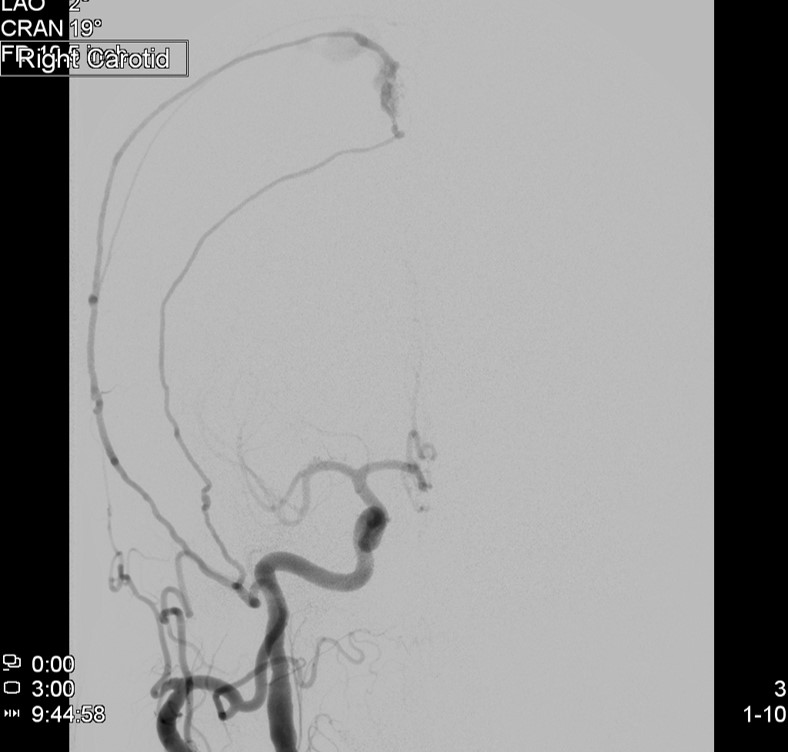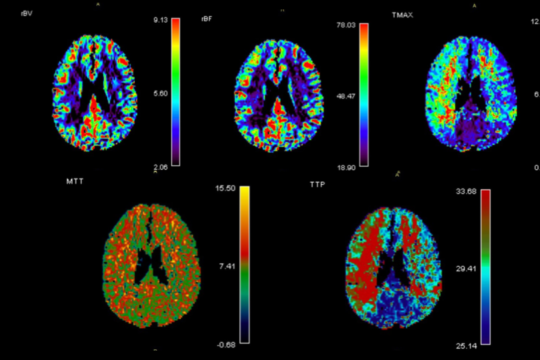Overview / Multidisciplinary Approach
A dural arteriovenous fistula (dAVF) is a vascular malformation of the brain and spinal cord. Within the vascular system there is fast (high pressure) delivery of nutrients and oxygen in the arteries and slow (low pressure) return of waste back to the heart and lungs. Capillaries, the nutrient exchange centers throughout your body, are what safely bridge the high pressure arteries to the low pressure veins. In patients with dAVF’s these capillaries are entirely absent and instead there is a dangerous, abnormal connection between the high pressure arteries and the low pressure thinly-walled veins, which are not biologically designed to handle high arterial pressures.
Symptoms
DAVF’s are potentially devastating lesions that can occur anywhere in the brain and spinal cord, though they usually present on the leathery surface membrane (the dura). They are often discovered incidentally through a diagnostic test ordered for another reason. However, many people may present with symptoms. DAVF’s that bleed (hemorrhage) can lead to serious neurological problems and sometimes death. Yet some people with dAVF’s never experience symptoms or complications. Other symptoms include:
- Tinnitus (ringing in the ears)
- Intracranial Hypertension
- Focal neurologic deficit (vision changes)
- Seizure
Causes
The cause of dAVF’s remains poorly understood. Trauma, infection, or prior thrombosis (clotting) of one of the major veins draining the brain or spinal cord are thought to be inciting events. They are acquired, and can occur at any age. DAVF’s are rare, occurring in about 0.02% of the population (20 cases per 100,000 people).
Diagnosis
While a CT (computed tomography) or MRI (magnetic resonance imaging) test of either the brain or spinal cord will typically first detect these lesions, catheter-based diagnostic (cerebral or spinal) angiography is essential to fully understand and characterize the dAVF. This evaluation allows your doctor to determine your future risk of symptoms and your treatment options. Treatment of a dAVF depends on whether symptoms are present or not, how large the lesion is, where it is located, and a host of other features only determined by the diagnostic (cerebral or spinal) angiogram.
Comprehensive Care Centers
Treatment Options
- Surgical Resection
During a surgical resection, with the help of a high-powered microscope, your neurosurgeon performs a craniotomy (removes part of your skull temporarily) to gain access to the DAVF and carefully remove it from the tissues around the brain or spinal cord.
Resection is usually done when the DAVF can be removed with little risk of hemorrhage or seizures or cannot be closed with embolization.
- Embolization
Historically an adjunctive treatment, Embolization can now be a primary therapy for select lesions. During embolization we pass a catheter through the groin up into the arteries in the brain that lead to the DAVF, and inject a material into these arteries that blocks off the artery and reduces the blood flow through the DAVF.

LPG Neurosurgery
Rhode Island Hospital
593 Eddy Street
APC Building, 5th Floor
Providence, RI 02903
Phone: (401)-444-8806
